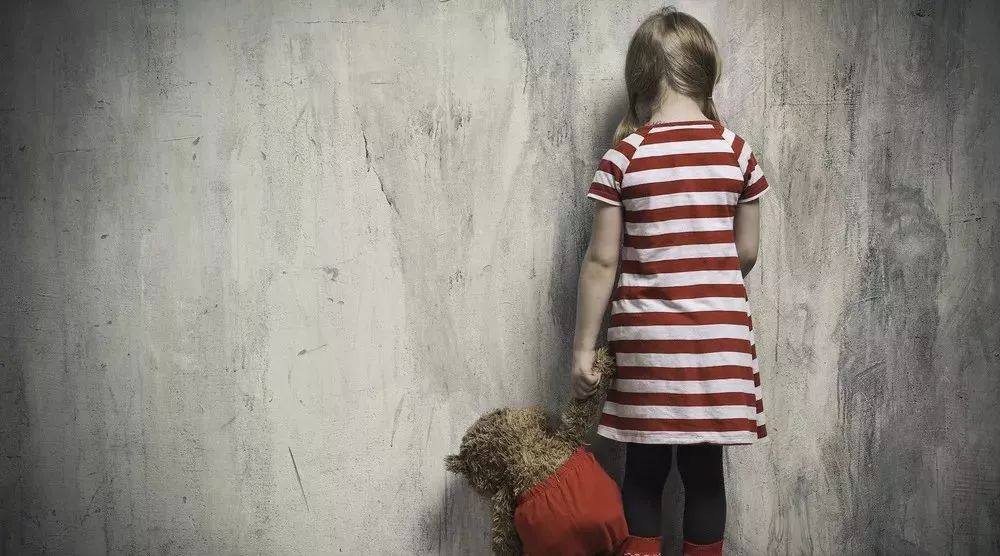
Parents of children aged 3-5 often face a very tangled question when their children make mistakes-should they punish their children?
If children are punished, what is more appropriate? Is there anything what needs to pay attention to when using these methods?
Don’t corporal punishment of children
For corporal punishment, many parents know that it is not good, but more parents still hold the mentality of “beating when necessary”.
First of all, corporal punishment is a kind of punishment with low efficiency and high cost, which cannot be equated with the punishment to be mentioned in this article.
Secondly, the purpose of punishment is to make children understand the rules and recognize mistakes, but corporal punishment will make children repeat it more often.
For example, stealing snacks, although the child will stop this behavior due to corporal punishment in a short period of time, if the child does not realize that the behavior itself is wrong, after a period of time, if stealing snacks again succeeds, this behavior will be strengthened instead, and there will be a situation of [not listening to what he said].
Finally, corporal punishment will also lead children to evade responsibilities and seek excuses when dealing with problems.
There are also some children who are used to using violence to solve problems, which is also related to parents’ frequent use of corporal punishment.

Does Time Out, a popular parenting law in Europe and America, really work?
KK’s mother’s friend brought her 3-year-old son Doudou to visit. KK and Doudou, 4.5 years old, had a good time all the time.
Just as KK’s mother was having a good talk with her friends, she suddenly heard Doug crying. Adults heard the sound and found that KK had hit Doug. Mother took KK to the kitchen and said, “You can only be here for 15 minutes now.”
Say that finish, put the alarm clock on the case for 15 minutes and left. At first KK also kept crying, slowly there was no sound, and the alarm clock also rang.
My mother came over and asked KK if she knew why she was standing here. KK nodded and said that she had hit her little brother.
My mother praised KK for his courage to admit his mistake, then simply said the truth, kissed her on the forehead and let KK and Doug play.
The above scene is a typical understanding of the [Time Out] discipline method.
In many parts of the United States, beating and scolding children is illegal. In order to treat the [Xiong Wa] in the family, parents will use this method to let children actively recognize and discover their bad behaviors by temporarily leaving them calm and alone, thus establishing rules.
The specific way is to discover the child’s bad behavior in time and let the child be alone in a fixed place (mostly [calm corner] or a special small bench). This method is suitable for the vast majority of children aged 3-5 or even 8.
Although this rule is simple and easy to operate, many parents also reflect that one feels that their children will fail after using it several times, and the other is that this method is easily confused with [penalty sitting] [penalty standing].

In fact, this is because some problems have been ignored in the implementation process:
1. Failure to confirm [proper behavior] and [improper behavior] with children
When things happen, parents’ definition of mistakes is not clear enough, which may lead children to refuse, resist the execution of punishment, and even have a vindictive mentality of deliberately making mistakes.
2. The place of implementation is not fixed or suitable.
Each time in a different place, or in the bedroom. This does not have formal seriousness. A fixed place can strengthen the ritual and increase the sense of identity with the rules.
3. The rules are not implemented thoroughly or with emotion.
During the execution period, parents relented, agreed to conditions, etc., and compromised the punishment rules. This is actually breaking the bottom line and acquiescing in wrong behaviors.
In addition, many parents will not be able to control their emotions and stay and roar to make their children [Time Out], thus confusing [whether the rules are more important or whether the parents’ mood is more important].
4. Turn over old scores, nag or impose additional punishment after the end.
After that, parents should let their children know [we thank you for your cooperation in correcting your mistakes, it doesn’t matter if you make mistakes, it is important to admit them bravely], and then don’t repeat them.
Make good use of [natural punishment] and establish the consciousness of rules.
Compared with [Time Out], the method of [natural punishment] is more recommended.
[Natural Punishment] refers to the use of the original punishment results of the incident to punish children without adding artificial punishment items.
It is said that children do not eat well. Many parents’ practice is to severely criticize the meal, then chase after the child and feed it, or give the child a few meals in anger.
In fact, if the child does not eat at the meal and then you do not give him what he wants, if he insists on doing so several times, the child will eat very well at the meal.
This is because the child accepted the natural punishment result of “no meal at the meal point, no meal to eat”.
Of course, parents had better clarify the rules for their children after they have suffered the result of such a natural punishment, so that the children can realize the relationship between their [behavior] and [result].
[Natural Punishment] Is what’s Benefit?
Children between the ages of 3 and 5 are in the process of exploring and learning the outside world. [Natural Punishment] can strengthen their awareness of rules, but also strengthen their children’s desire to explore the world independently and cultivate their awareness of autonomy and responsibility. Rules, autonomy and responsibility are directly related to the growth of willpower, a key learning quality after entering primary school.
Good use and habitual use of [natural punishment] will not only save effort in education, but also help children grow up.

Punishment without explanation is useless.
Punishment is to explain and internalize the rules. However, in most cases, many parents only let the punishment stay on the surface [punishment] and did not explain the reasons behind the punishment and the purpose of the punishment for their children.
The most important purpose of punishment is to let children realize the rules from the results of [punishment] behavior, and gradually internalize and form the habit of self-discipline from the understanding of the rules.
For example, also for lateness, different expressions have different depths of rules:
[Don’t be late, or you can do it at your own discretion.]-This is a simple reminder of the rule that you can’t be late for school.
[Can’t be late, because if you are late, you can’t learn knowledge, and you can’t play with your friends. I remember you still have your favorite courses today.]-This is the process of interpreting and internalizing the rules.
Parents should explain the meaning of punishment clearly, instead of simply letting their children accept punishment and simply stop their behavior, but they do not understand the rules themselves.
Interpretation of the rules is the most critical part of punishment! No matter how many or how good the method is, it is useless to explain it without explanation. Later explanation is very important!

The Principle Bottom Line of Punishment
For punishment, parents need to pay attention to several principles and bottom lines:
1. Punishment also requires preparation in advance, communication and confirmation with children. It cannot be determined by mood or by things at will.
2. Immediately implement it, not in a few days. Immediately implement it is an effective deterrent to mistakes.
3. The most basic bottom line of punishment cannot be easily changed because of the situation, and the content of punishment cannot be changed at will. It is necessary to discuss and confirm with the child if modification is needed.
4. Take the matter as it is, do not label the children, do not calculate the general ledger, and do not impose additional punishment afterwards.
5. Punishment should vary from person to person. Parents know their children best as what’s character, what’s weakness needs to be avoided, and which way to punish is the most suitable. In the process of punishment, mistakes can be punished, but children’s self-esteem cannot be hurt.
6. No matter what reasons, do not punish children in public. This will only arouse children’s feelings of shame and resentment, weaken the effectiveness of punishment and strengthen the mentality of inferiority.
